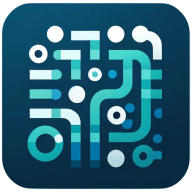How to Learn New Technical Concepts Independently
In the rapidly evolving tech landscape, staying up-to-date with new concepts is crucial for professionals and enthusiasts alike. This article explores effective strategies for independently learning technical skills, from serverless architecture to AI model training and API integration. Drawing on insights from industry experts, readers will discover practical approaches to tackle these complex topics and enhance their technical proficiency.
- Mastering Serverless Architecture Through Diverse Learning
- AI Model Training via Strategic Questioning
- Tackling API Integration Step by Step
Mastering Serverless Architecture Through Diverse Learning
One memorable experience where I had to independently learn a new technical concept was when I led a project at Amazon AWS that required in-depth knowledge of serverless architecture and its integration with complex cloud environments. At that time, serverless was an emerging paradigm that promised significant improvements in scalability and cost efficiency, but I had yet to fully engage with it in such a comprehensive manner.
My approach to learning this new concept was both structured and multifaceted. I began by immersing myself in available documentation and technical papers from AWS, which provided foundational insights into serverless functions, their lifecycle, and event-driven architectures. AWS's online tutorials and webinars were instrumental in illustrating real-world applications and best practices for leveraging services like AWS Lambda, which I later implemented.
Recognizing the importance of community knowledge, I engaged in several technical forums and online communities such as Stack Overflow and AWS-specific discussion groups. These platforms allowed me to interact with other professionals who shared practical challenges and solutions around serverless technology.
Additionally, I supplemented my learning by enrolling in a course on Coursera that focused on serverless computing and cloud integrations. This course offered structured lessons and projects that reinforced my theoretical understanding with hands-on practice.
To ensure my learning translated into actionable skills, I created a sandbox environment where I could experiment without impacting live workloads. This environment allowed me to iterate quickly, test deployments, and gain confidence in managing serverless applications effectively.
Finally, I leveraged my experience to integrate serverless architecture into our existing cloud infrastructure, devising a serverless metering and billing platform that enhanced scalability and efficiency for a global customer base. This project not only reinforced my learning but also paved the way for further innovation within our team.
Through this process, I learned the significance of curating a personalized learning journey that combines self-study, community interaction, and practical application. This methodology not only equipped me with the necessary skills at the time but also set a blueprint for approaching future technical challenges.

AI Model Training via Strategic Questioning
Recently, I needed to learn how to train a customized AI model with data recovery expertise for my company, DataNumen. This was completely new territory for me as a CEO in the data recovery software space.
In the past, my approach to learning new technical concepts involved reading extensive online documentation and technical papers, which was time-consuming and often overwhelming. However, for this AI project, I adopted what I call a "learn by question" method that proved far more effective.
Instead of diving into dense technical documentation, I broke down the complex topic into specific, targeted questions: How do you prepare training data for AI models? What frameworks work best for domain-specific applications? How do you validate model performance in specialized fields like data recovery? I then systematically sought answers to each question through a combination of AI assistants and targeted research.
This question-driven approach allowed me to build understanding incrementally, connecting each new concept to practical applications in my field. Rather than getting lost in theoretical details, I could immediately see how each piece of knowledge applied to our specific use case. The result was a much deeper, more practical understanding of AI model training in significantly less time than traditional methods would have required.
This experience taught me that strategic questioning, rather than passive consumption of information, creates more efficient and actionable learning outcomes.

Tackling API Integration Step by Step
A few months ago, I needed to learn how to integrate an API into our system. I had no prior experience with APIs, so I started by reading the official documentation from the provider, but quickly realized that it was a lot to absorb at once. To make it more manageable, I broke the process into smaller tasks, such as learning about authentication first and then understanding the request-response flow. I also turned to online tutorials, specifically on YouTube and developer forums like Stack Overflow, where I could see real-world examples and ask questions if I got stuck. I practiced by building simple test projects before integrating it into our system. This hands-on approach, paired with community resources, helped me gain confidence and solidify my understanding. It took a bit longer than expected, but it paid off when the integration went smoothly and without issues.


